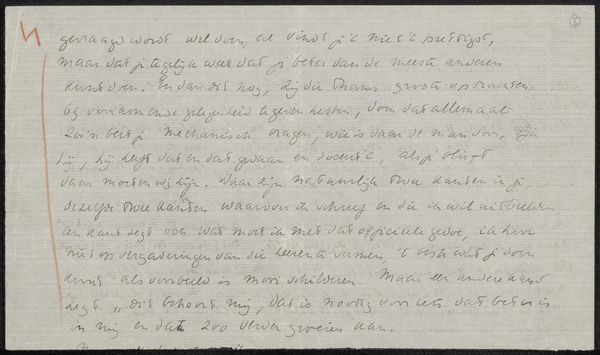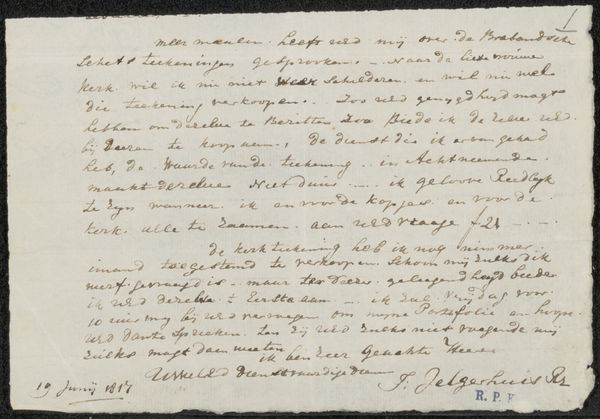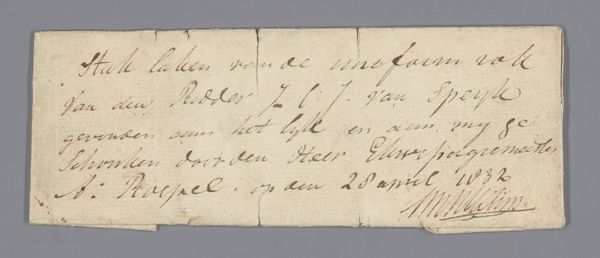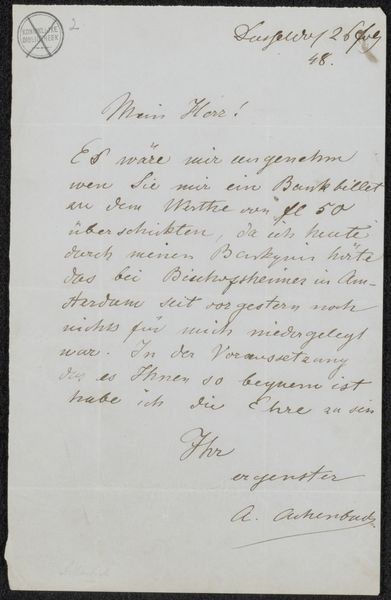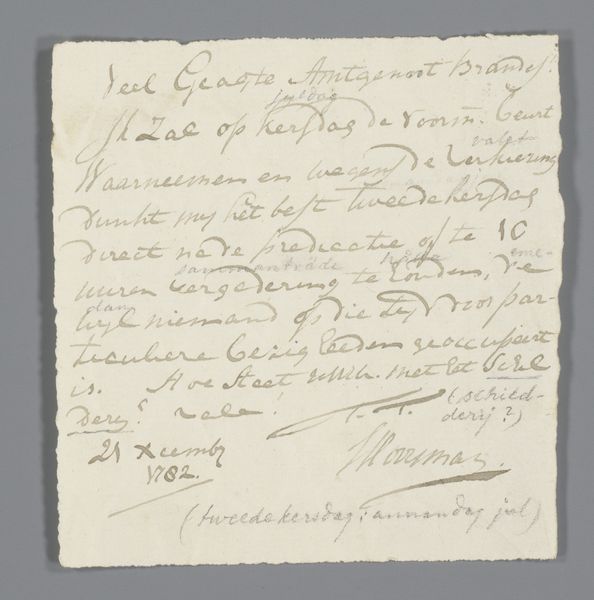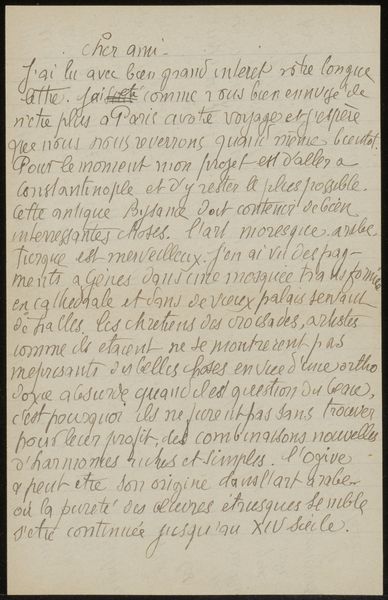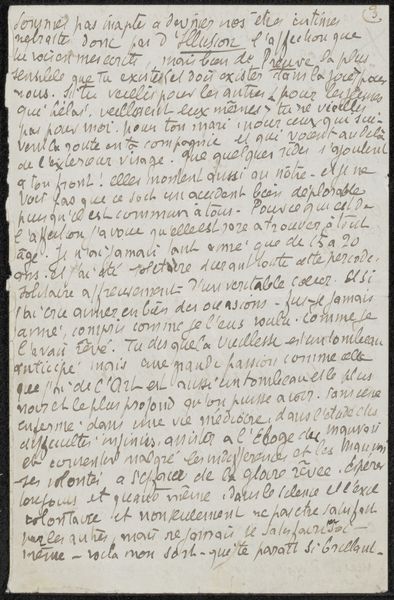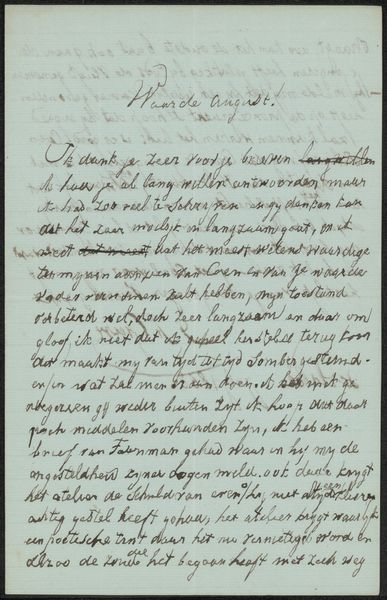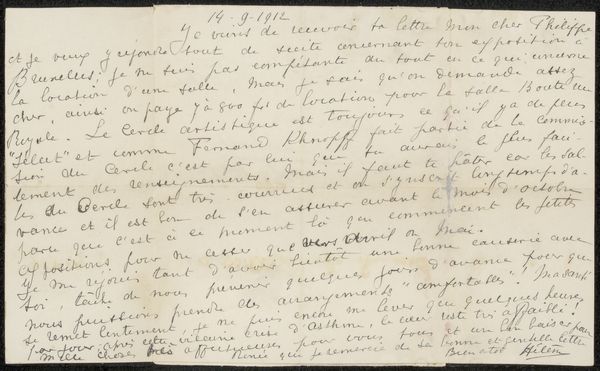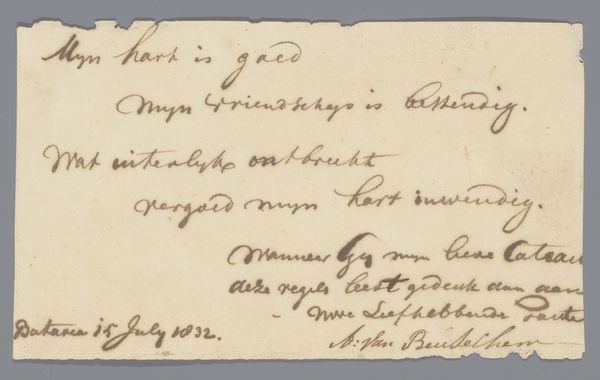
drawing, paper, ink
#
drawing
#
aged paper
#
paper
#
personal sketchbook
#
ink
#
journal
#
fading type
#
history-painting
Dimensions: height 146 mm, width 190 mm
Copyright: Rijks Museum: Open Domain
Curator: The Rijksmuseum holds this interesting, though somewhat enigmatic, drawing titled "Handschrift over de spotprent op Taurinus (1615)". It’s an anonymous work from the 19th century, executed in ink on paper. Editor: Well, my first impression is that the aged paper gives it an antique quality, even ghostly. It’s the texture, the faint fading script; it all hints at secrets carefully veiled by time. Curator: Indeed. What’s compelling is the handwriting itself. Though dating from the 19th century, the inscription refers to pamphlets leveled against Jacobus Taurinus in 1615. Taurinus was a fierce opponent of the Dutch Arminian theologian, Jacobus Arminius. Editor: I see the frenetic looping script. Is it a fair assumption that this was written with speed, perhaps to transcribe thoughts or capture events in real-time? The almost violent turns of the ink mimic a struggle of ideas. Curator: It’s a possibility. It's quite a passionate piece of political and religious ephemera. These tracts, and therefore, this document, played a critical role in the theological debates of the period. Public opinion was often swayed through broadsides and satirical prints. This manuscript is likely related to how the debates were being processed much later in the 19th century. Editor: What a potent combination of fragility and aggression. I love how such a delicate medium becomes a battleground of words. Curator: Exactly. Think of it as an early form of political cartoon commentary, meant to influence the public discourse. The drawing gives access to debates that once consumed society. Editor: I find myself marveling at the aesthetic dimensions – how these debates become etched, literally, on something so intimate as a sheet of paper. Curator: Its significance lies in its connection to a significant chapter of religious and political upheaval in Dutch history, which still casts its shadow today. Editor: For me, it lies in the strange beauty of the aging ink. And in how material itself has now become a witness of that period, a fascinating study on paper.
Comments
No comments
Be the first to comment and join the conversation on the ultimate creative platform.
